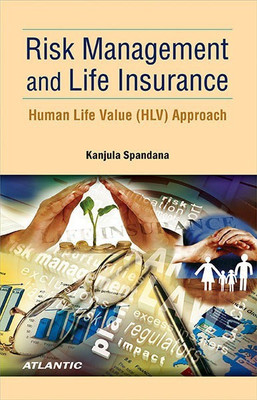Risk Management and Life Insurance Human Life Value (Hlv) Approach(English, Paperback, Spandana Kanjula)
Quick Overview
Product Price Comparison
Perhaps, the first of its kind, the present book aims at making an in-depth study of human life value (HLV) approach to optimal life insurance protection in the light of recent ramifications of risk and personal risk management. A major intervention in management studies, the book seeks to throw fresh light on the concept of human life value as an offshoot of human capital theory and the role of life insurance in manŌĆÖs quest for unfailing economic security. It shows how, approached from the human life value (HLV) point of view, life insurance plays a proactive role in man's economic affairs. The importance of the study lies in establishing a conceptual framework for estimating the value of assets in the form of human capital and applying risk management principles to personal risks in order to safeguard human life values. Furthermore, it shows how, approached from the human life value (HLV) viewpoint, life insurance acquires a new dimension. On top of that, it reinforces the view that in its economic mission, life insurance is not limited to the indemnification of the loss of life and property values, but extended to serve productive purposes and provide an economic security that motivates one to accomplish higher needs like self-esteem and self-actualization, thereby finding greater meaning in life. As a comprehensive work on risk management and optimal life insurance with a humanist approach, covering basic concepts and market practices supplemented with latest information and developments in the field, the book is expected to satisfy the long-felt need of the students and teachers of management studies in colleges and universities. The cogent and lucid presentation of the subject matter facilitates an easy read and critical appreciation of the intricacies and nuances of optimal life insurance and risk management. The book is also expected to serve the needs and interests of the various levels of Indian life insurance personnel who have been looking forward to a good book bringing the latest insights of risk management to bear upon the most recent trends in life insurance for their ready reference and practical use.


